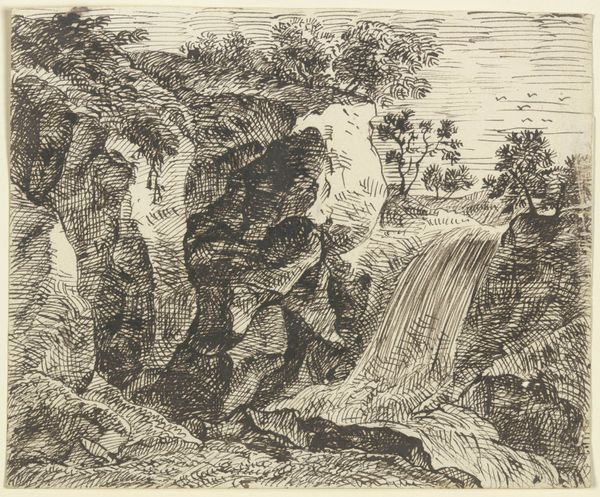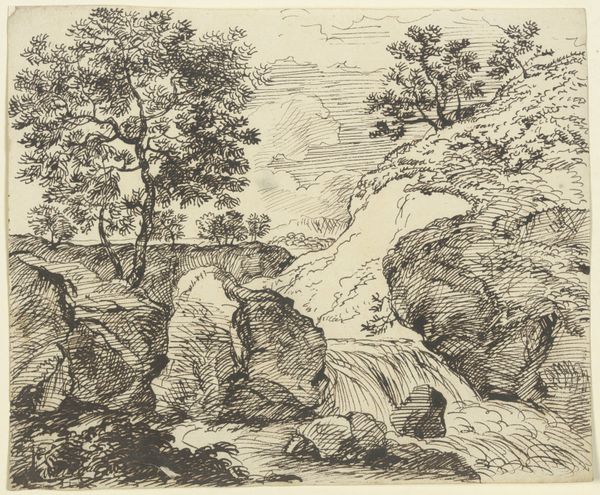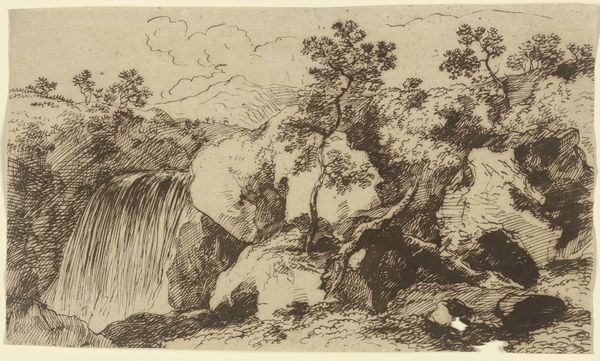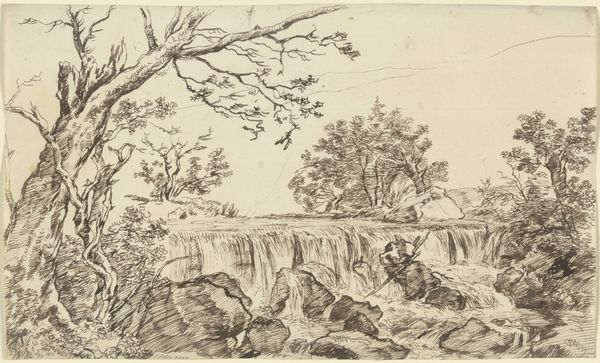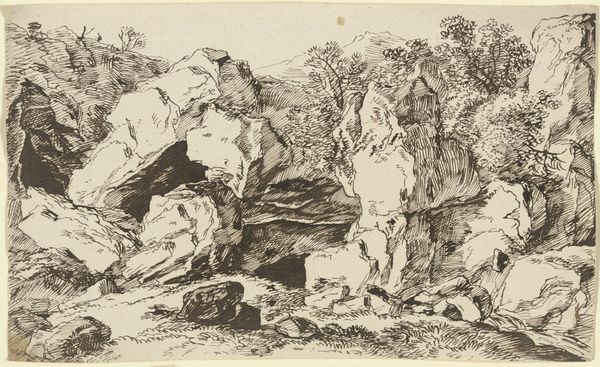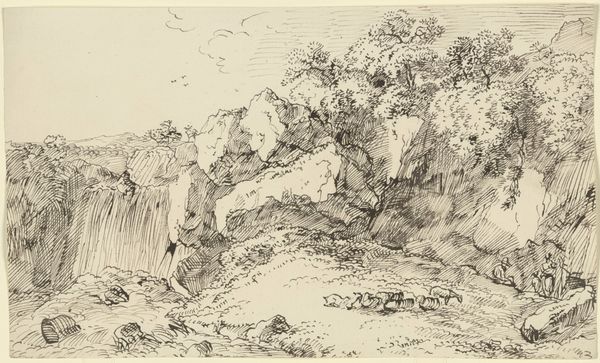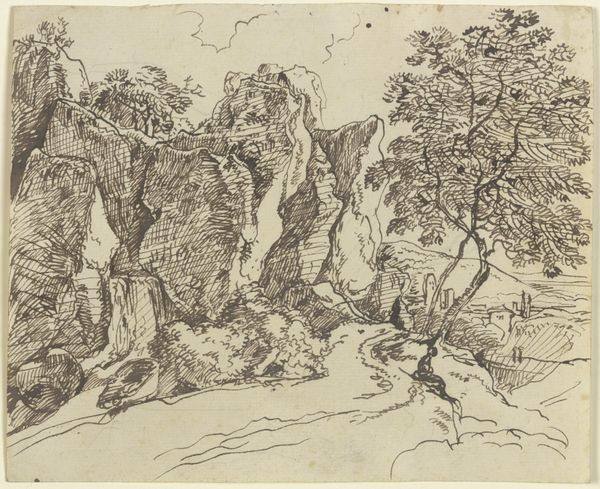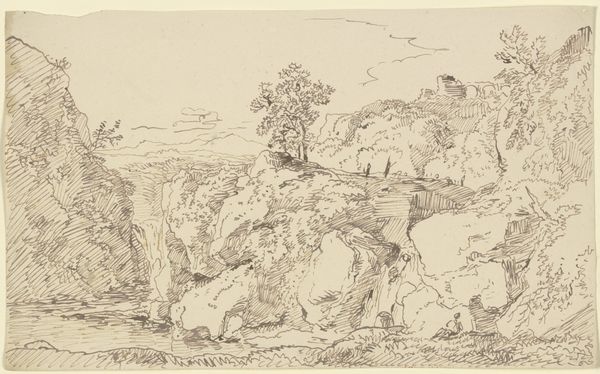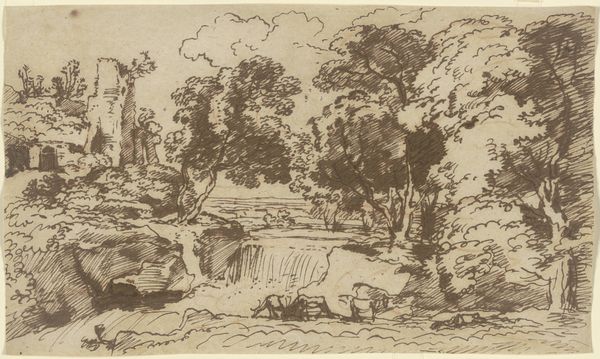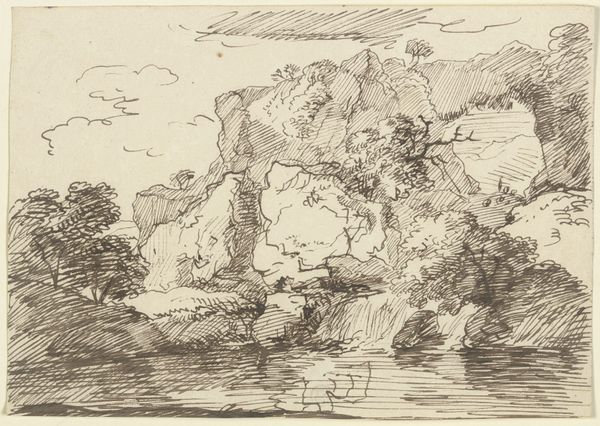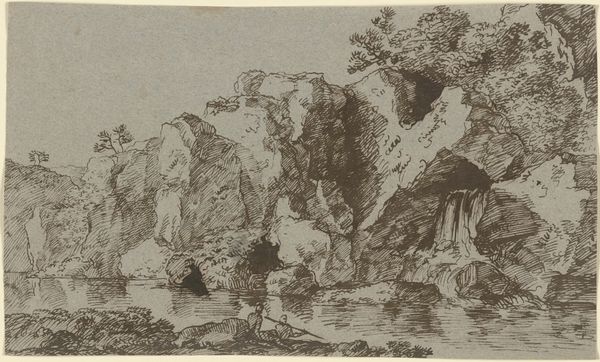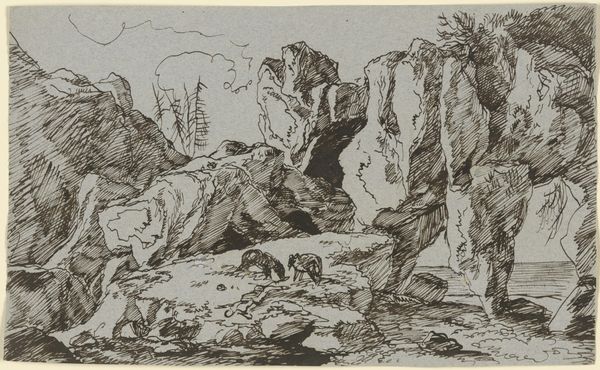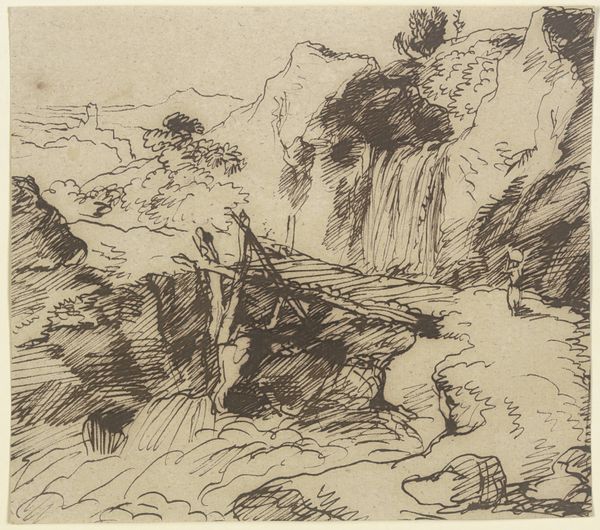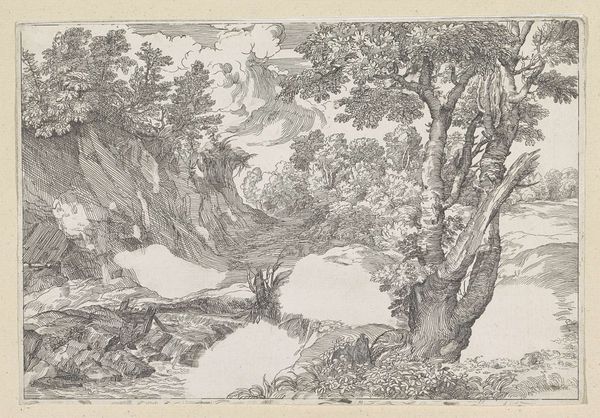
drawing, dry-media, ink, chalk, pen
#
drawing
#
ink drawing
#
pen sketch
#
landscape
#
dry-media
#
ink
#
pencil drawing
#
chalk
#
15_18th-century
#
pen
Copyright: Public Domain
Editor: Here we have Franz Kobell's "Landscape with Waterfall," rendered with pen, ink, and chalk. It seems to capture the raw, almost volatile energy of nature, doesn’t it? What story do you think this landscape is trying to tell us? Curator: Well, given the context of the 18th century, consider the evolving perception of nature. Before Romanticism fully took hold, landscapes often served as idealized backdrops, but drawings like this started to capture a more “sublime” experience. It’s not just pretty; there's an element of untamed power. How do you see that reflected formally? Editor: I notice that the waterfall itself dominates the composition. Its powerful verticality, contrasted with the more horizontal strokes describing the land… almost a forceful takeover of the land itself? Curator: Precisely! And think about the consumption of landscape imagery at that time. Growing urban populations began to appreciate "natural" scenery in artistic form, and, with social changes afoot, idealized landscapes gained more value for their projection of personal freedom and direct encounters with nature. Consider that these were often commissioned or purchased by burgeoning merchant classes or members of court interested in country estates. Editor: So, was the act of *collecting* images of landscapes like participating in an idea of liberation and ownership? Curator: Exactly. Patrons exerted their power through owning art, dictating subject matter and style. This particular piece may suggest control through careful visual observation; and the artist certainly found value by participating in this transaction and power play. Who controlled nature – both represented in art and experienced directly? Editor: That is some food for thought about artistic value then and how the public would engage with work. Thanks for helping me better understand! Curator: My pleasure. It's crucial to view art through a critical lens, questioning whose perspectives are valued, and who dictates its value.
Comments
No comments
Be the first to comment and join the conversation on the ultimate creative platform.
